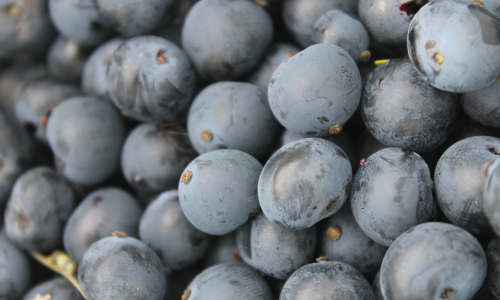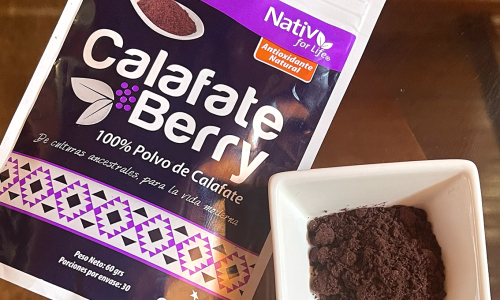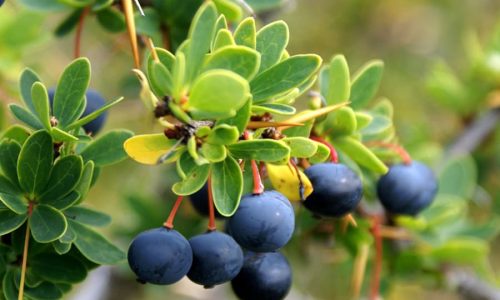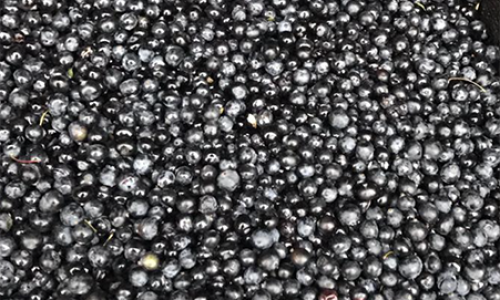Calafate
In the Chilean and Argentinean Patagonia grows this small black berry fruit, of no more than 1 cm in diameter, which was consumed by ancient prehispanic cultures, like the Kawéskar and the Selknam, as infusions to treat some conditions. Its properties have been rediscovered thus being recognized as one of the super foods that could prevent diseases when included in daily diet.
Several studies highlight its anti-inflammatory and antioxidant effects, as well as its significant anthocyanins content.
In folk medicine it has been used as an antidiarrheal, antifebrile and antiseptic agent. Research indicate that it could prevent insulin resistance and the development of diabetes, and although much remains to be studied from this berry, popular wisdom, the work of scientists and experience help us to recognize calafate as one of our super foods.




It is a fruit native to the Chilean and Argentinean Patagonia.
Enables pro-inflammatory state regulation; also inhibits inflammatory features such as nitric oxide production. It counteracts the effect of oxidative stress by being rich in anthocyanins, notably in malvidin, beneficial for alleviating muscle oxidative damage (Hurst et al., 2010).
Calafate extract inhibits in vitro digestive enzymes (such as glucosidase), so it may be effective in the treatment of type II diabetes.
Anthocyanin concentration ranges from 22.91 to 35.99 mol/g fresh weight of calafate. 18 anthocyanins have been identifiedin it, within which predominant types are Delphinidins, Petunidins and Malvidins.
